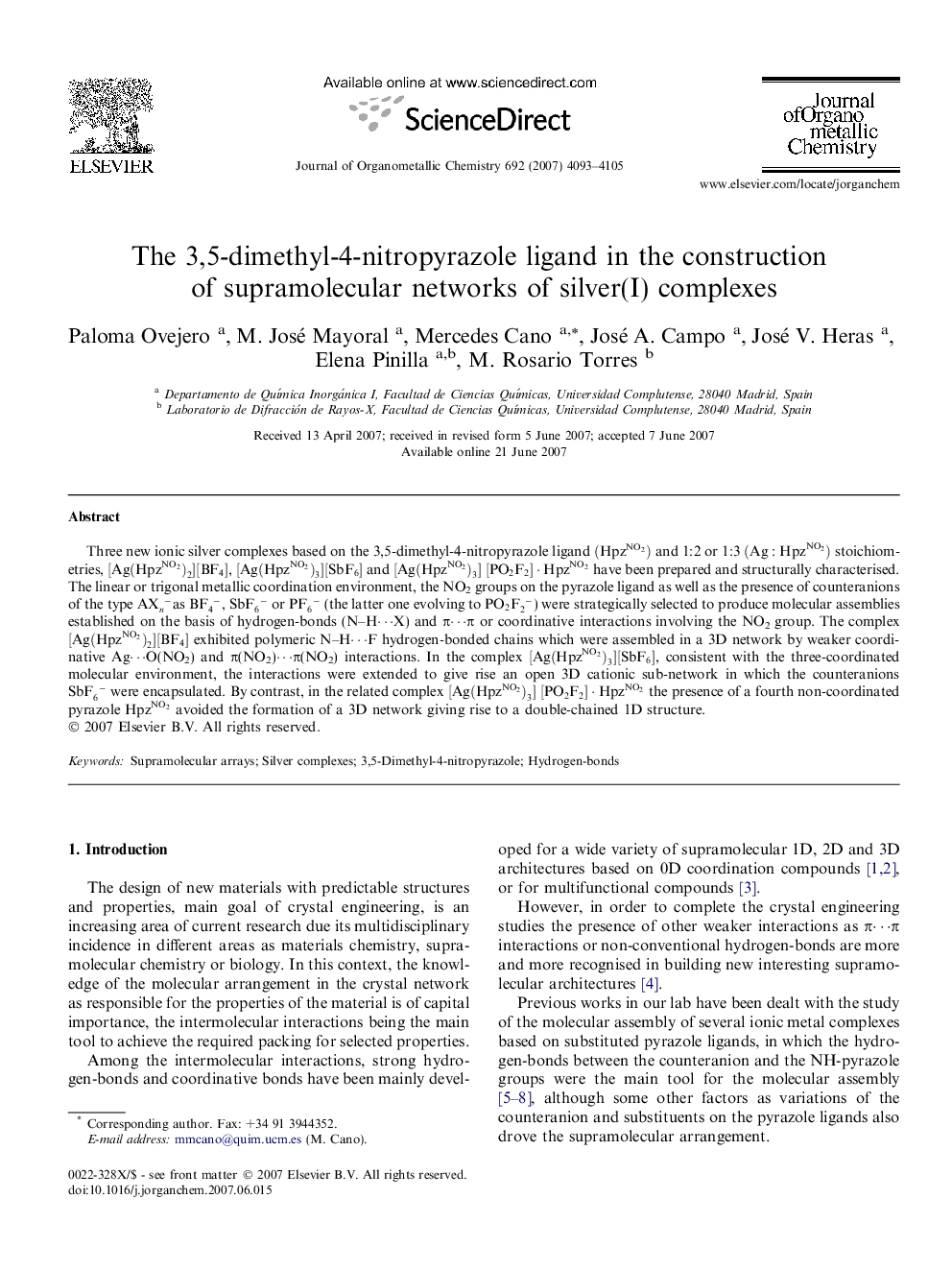| Article ID | Journal | Published Year | Pages | File Type |
|---|---|---|---|---|
| 1323398 | Journal of Organometallic Chemistry | 2007 | 13 Pages |
Three new ionic silver complexes based on the 3,5-dimethyl-4-nitropyrazole ligand (HpzNO2)(HpzNO2) and 1:2 or 1:3 (Ag:HpzNO2)(Ag:HpzNO2) stoichiometries, [Ag(HpzNO2)2][BF4][Ag(HpzNO2)2][BF4], [Ag(HpzNO2)3][SbF6][Ag(HpzNO2)3][SbF6] and [Ag(HpzNO2)3][Ag(HpzNO2)3][PO2F2]·HpzNO2[PO2F2]·HpzNO2 have been prepared and structurally characterised. The linear or trigonal metallic coordination environment, the NO2 groups on the pyrazole ligand as well as the presence of counteranions of the type AXn-as BF4-, SbF6- or PF6- (the latter one evolving to PO2F2-) were strategically selected to produce molecular assemblies established on the basis of hydrogen-bonds (N–H⋯X) and π⋯π or coordinative interactions involving the NO2 group. The complex [Ag(HpzNO2)2][BF4][Ag(HpzNO2)2][BF4] exhibited polymeric N–H⋯F hydrogen-bonded chains which were assembled in a 3D network by weaker coordinative Ag⋯O(NO2) and π(NO2)⋯π(NO2) interactions. In the complex [Ag(HpzNO2)3][SbF6][Ag(HpzNO2)3][SbF6], consistent with the three-coordinated molecular environment, the interactions were extended to give rise an open 3D cationic sub-network in which the counteranions SbF6- were encapsulated. By contrast, in the related complex [Ag(HpzNO2)3][Ag(HpzNO2)3][PO2F2]·HpzNO2[PO2F2]·HpzNO2 the presence of a fourth non-coordinated pyrazole HpzNO2HpzNO2 avoided the formation of a 3D network giving rise to a double-chained 1D structure.
Graphical abstractNew ionic silver(I) compounds based on the 3,5-dimethyl-4-nitropyrazole (HpzNO2)(HpzNO2) ligand have been prepared looking for predictable molecular assemblies. Hydrogen-bonds and/or coordinative, π⋯π and/or non-conventional hydrogen-bond interactions have been used in designing polymers or supramolecular arrays. Herein the structures of the compounds [Ag(HpzNO2)2][BF4][Ag(HpzNO2)2][BF4], [Ag(HpzNO2)3][SbF6][Ag(HpzNO2)3][SbF6] and [Ag(HpzNO2)3][PO2F2]·HpzNO2[Ag(HpzNO2)3][PO2F2]·HpzNO2 are described analysing the influence of factors as the metal coordination environment, the counteranion and the NO2 substituent on the final architectures.Figure optionsDownload full-size imageDownload as PowerPoint slide
